Flexible Displays: A Revolutionary Breakthrough!
The key difference between the foldable phones of the past and the phones of the future is that modern designers and engineers are having to solve the issue of how you make a handset's screen fold and flex without damaging it. But what exactly is a flexible display and why do technology majors around the world see it as the next big thing? Let’s check out.
![215243f5ygzfgheeknndhz.jpg.thumb.jpg [Mi Knowledge Hub #2] Flexible Displays: A Revolutionary Breakthrough!](https://u01.appmifile.com/images/2019/04/21/02a24c45-213c-4efc-8ff8-349d7499dfdf.jpg)
What is Flexible Display?
The flexible display is an electronic visual display which is flexible in nature like a piece of paper. In simple words, flexible displays are displays which are fully bendable or foldable. Flat screens traditionally use liquid crystal displays (LCD), which include all the basic things you need to make a screen, such as a backlight, polariser and so on. Flexible screens, on the other hand, use organic light emitting diode (OLED) displays. These are significantly simpler in construction, meaning they’re thinner and easier to mould into a curved display.
![215440x5dwgc55ddusnd12.jpg.thumb.jpg [Mi Knowledge Hub #2] Flexible Displays: A Revolutionary Breakthrough!](https://u01.appmifile.com/images/2019/04/21/527726dd-0acf-4a26-9e57-be19c9303841.jpg)
The Galaxy maker showed off its new Infinity Flex Display recently, a display technology that will allow a tablet-sized screen to fold into a device that approximates the size and shape of a smartphone. Manufacturers like Corning are currently working on a flexible glass called Willow, which is planned to be put into everything from telephones to televisions to carry devices. Willow is as thin as a piece of paper and can be bent too. But it will still break if it gets too much rounded up.
Potential Applications
The most important applications driving the flexible display market at this point are smartwatches and smartphones. Foldable displays will likely come first to accommodate the growing demand for larger displays and the need for portability. As the wearable device market grows, bendable displays could be used to wraparound an individual’s wrist. Finally, displays that can be rolled up may be used in televisions and eventually a tubular device with a retractable roll out display.
![215624s0rpcc6t6j4cr888.jpg.thumb.jpg [Mi Knowledge Hub #2] Flexible Displays: A Revolutionary Breakthrough!](https://u01.appmifile.com/images/2019/04/21/347187f8-462d-4975-bd76-31332bca7775.jpg)
Smartphones with flexible displays can be more ergonomic for users, since the natural arc of the human finger corresponds more closely with the curvature of a flexible display than for a rigid surface. Games are easier to play. And curved edges allow viewing more easily of the phone's content when the device is tucked away in a bag than a flat device can. Other technologies could also benefit from flexible displays. For example, flexible displays could be used as clothing that changes colour or pattern instantly as per the environment, making these particularly useful for soldiers. Cars could also use curved screens as more and more dashboards are going digital.
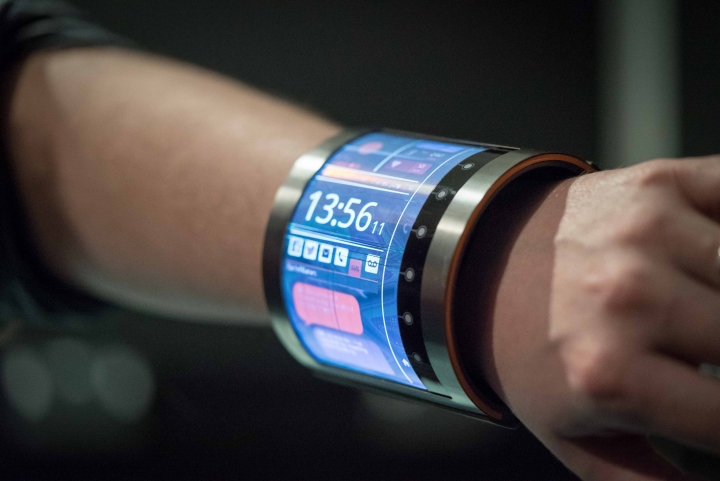
How Does Flexible Display Work?
Traditional Organic Light Emitting Diode (OLED) screens convert electricity into light with the help of organic molecules that allow for the manufacture of screens 0.2mm thin. OLED screens integrate the circuitry with the glass, but this makes the screen brittle and prone to shattering. Current flexible display technology transcends the problem by integrating the circuitry with layers of flexible plastic film.
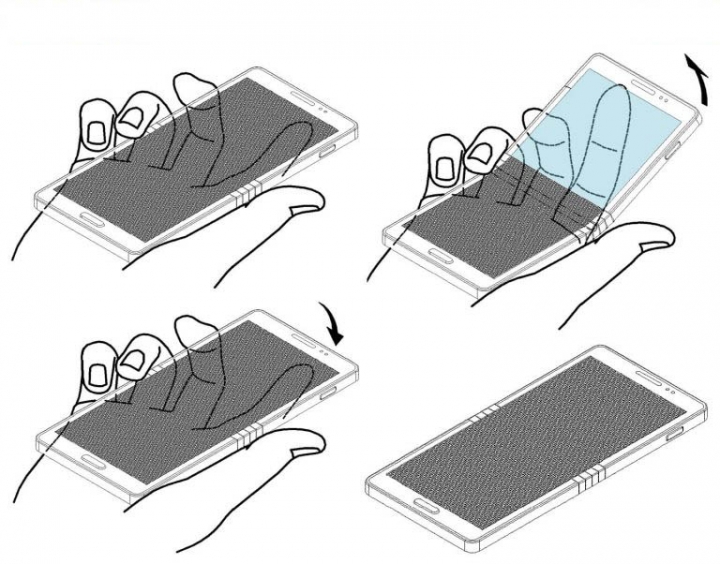
Unlike traditional flat panel displays OLEDs, one of the more popular types of flexible electronic displays are solid-state devices composed of thin films of organic molecules that create light with the application of electricity. OLEDs can provide brighter, crisper displays on electronic devices and use less power than conventional light-emitting diodes (LEDs) or liquid crystal displays (LCDs) used. Using glass substrates, flexible technology OLED’s utilizes plastic substrates, which allow the display to bend and twist.
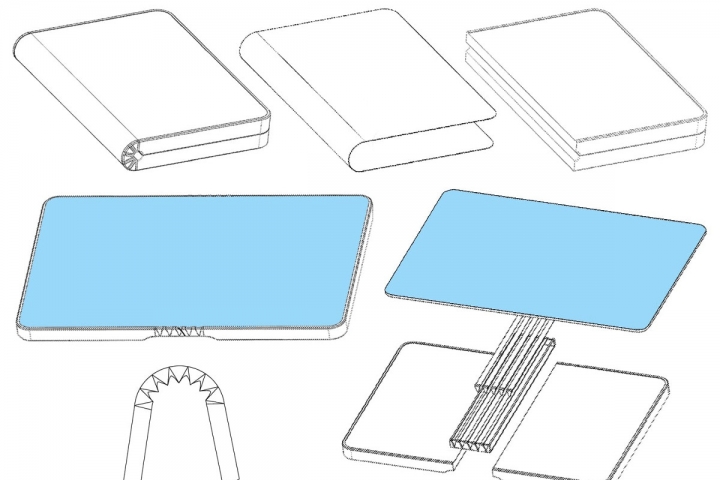
The organic light-emitting diodes (OLEDs) in these displays emit their own light, and as a result, they don’t need a backlight. This means they can be affixed to thin, lightweight materials, including plastic. Google confirmed at its developer conference on the same day. Google said Android will soon support foldable devices and released an animation of how it could work. Samsung also introduced a multi-active window, a multitasking system that will allow you to run up to three apps at once on the larger display.
Pros & Cons of Flexible Displays
Pros:
Flexibility – This technology is aimed at providing flexibility.
Light-weighted – The thin light-weighted flexi-screens would be very much useful especially for those who tend to travel a lot and need a minimal space to keep stuffs.
Durability – Since flexible displays employ OLEDs made out of plastic, they provide more durability as compared to traditional glass displays.
Thinner Dimensions – Flexible displays can allow smartphone devices to be manufactured with thinner dimensions and in shapes different than the conventional rectangular screen.
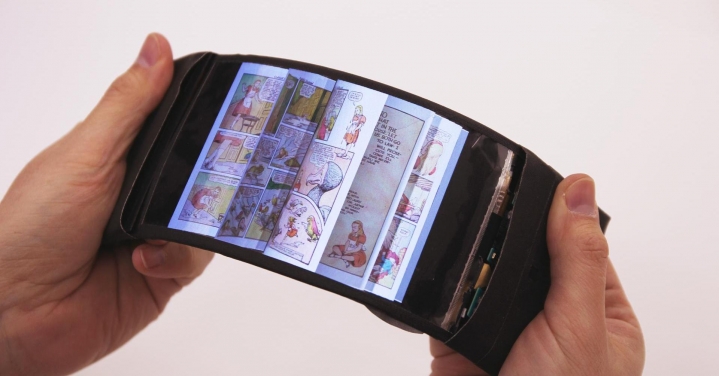
Cons:
Limited color graphics – Since everyone has grown the habit of HD quality experience in every electronic gadget it would be hard to tolerate the limited color palettes. This is because the performance of glass display is way better than that of the plastic display.
Slow Frame Rate – Currently the bendable screens phone face Slow Frame Rate, meaning the frequency at which text, picture, video, etc. is displayed.
Tendency of wear and tear – Since the bendable substance is bent more frequently as per the needs, chances are the screen will wear away with time.
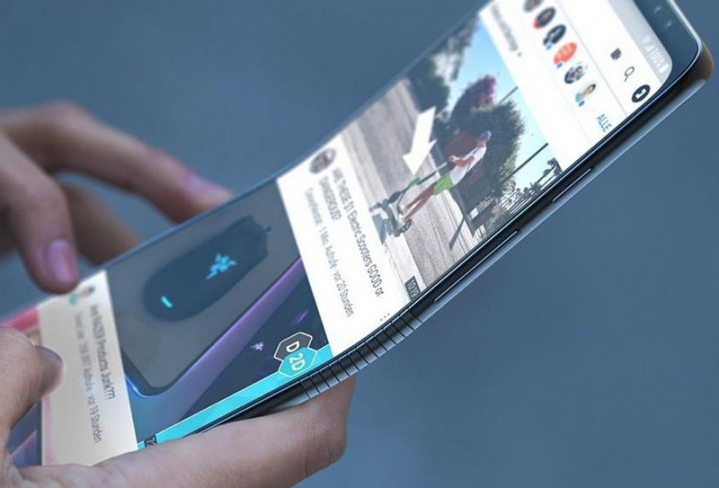
For decades displays have been simply flat pieces of glass or plastic that dictated the design of technology. With bendable display, manufacturers are looking to advance technology. In fact, flexible displays have the potential to become one of the biggest technological breakthroughs in the decade, encouraging designers to create devices we have never seen before. Foldable devices are a "killer app" for flexible displays that enable a variety of new uses and will push the technology up the value chain to wider consumer adoption.